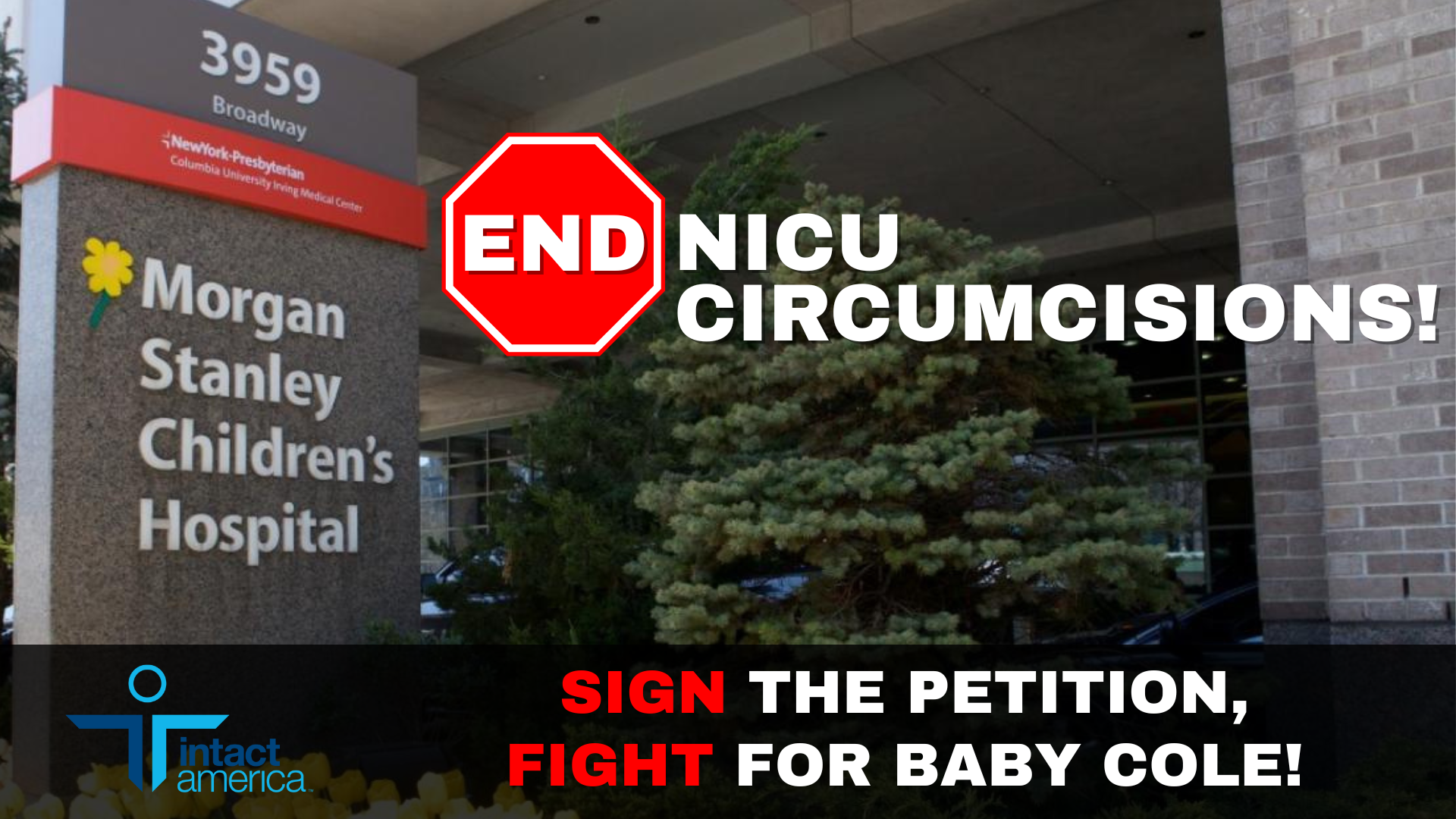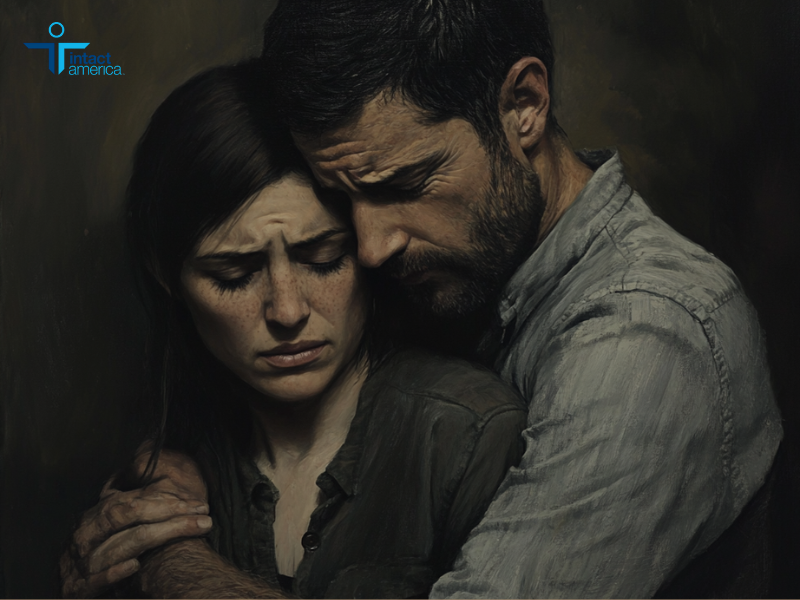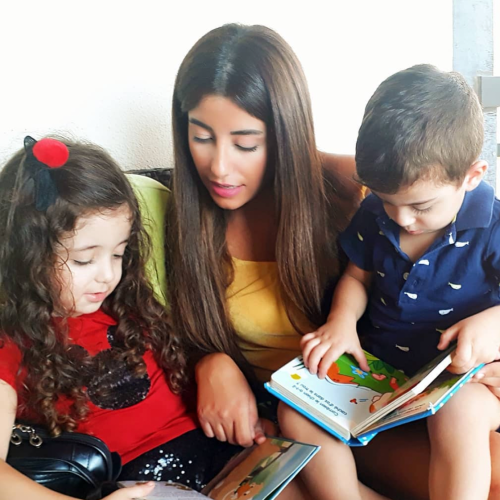
This isn’t just a medical procedure. It’s a genre.
The setting? Sterile. The lighting? Blinding. A newborn—soft, trusting, defenseless—is strapped down. Arms flailing. Eyes searching. A masked figure enters. Cold steel glints in the light.
And then—the scream.
It rips through the room, raw and instinctive.
Then… silence.
If you described this to someone without context, they’d assume you were talking about a horror film. But it’s not fiction. This happens daily in hospitals across the U.S., often before the baby has even left the maternity ward.
We’ve normalized a scene that should send chills down our spine.
Circumcision isn’t healthcare. It’s the original body horror.
The Plot Twist No One Warned You About
Body horror, as a genre, focuses on the grotesque—mutilated flesh, lost autonomy, and the unbearable violation of what it means to be human.
Now zoom out. Look again at the hospital scene.
The baby isn’t an actor. He’s the unwilling protagonist. The doctor, the masked monster. The parents, misinformed and misled, become bystanders. The audience—society—just watches.
But this horror isn’t sci-fi. It’s marketed as “routine.”
And the protagonist is left with scars—visible and invisible—for life.
The Monster in a Lab Coat
In horror, the scariest monsters are the ones who believe they’re helping. The surgeon who swears he’s saving lives. The doctor who says, “It’s for the greater good.”
Many physicians performing circumcision today fall into that category. Not malicious—just misinformed. Or worse, willfully ignorant.
The foreskin is not redundant. It is protective, self-lubricating, and vital to sexual health. It’s nerve-dense and functional—designed by nature, not accident.
Yet we treat it like waste. Worse, we sell it.
Removed foreskin is often sold to biotech firms, used in medical research, or even high-end cosmetics. We’re talking face creams made from severed infant tissue.
That’s not healthcare. That’s something out of Frankenstein.
Dismemberment in the Name of “Prevention”
In classic horror, mutilation is often presented as a cure. Cut off the limb before the infection spreads. Remove the tongue so they stop speaking the truth.
Circumcision follows this logic. We’re told:
- It prevents urinary tract infections.
- It reduces the risk of cancer.
- It helps him “look like Dad.”
None of this holds up under scrutiny.
UTIs? Rare and treatable.
Cancer? Lower risk than many cancers we don’t preemptively amputate for.
Matching Dad? Genitals aren’t matching outfits.
The reality is: we cut because we always have. We rationalize the horror because questioning it would make us complicit in it.
But tradition isn’t a get-out-of-jail-free card.
The Theft You Didn’t Know Happened
What if you woke up one day and discovered that part of your body was removed—without your knowledge, your consent, or any real reason?
Now imagine being told you should be grateful.
That’s the quiet reality for millions of men who learn in adulthood what the foreskin is—and what they lost.
Circumcision isn’t a neutral event. It’s a trauma buried so deep, we’ve built an entire culture around pretending it doesn’t exist.
The Silence That Screams
A nurse once called it “the sound of pure betrayal.” The scream of a baby, minutes old, strapped to a board and cut without anesthesia. A scream that echoes through maternity wards and down generations.
Science confirms what every parent has heard but tries to forget: circumcision is excruciating. Newborns display pain responses stronger than older children. They spike cortisol levels. Their nervous systems change. Their pain thresholds shift—forever.
And yet we pretend:
- “He won’t remember.”
- “It’s just a snip.”
- “He cried when he got his shots too.”
But circumcision isn’t necessary. The silence surrounding this trauma is what turns it from violence into horror.
Because horror isn’t just about what happens, it’s about who refuses to stop it.
Inherited Violence, Disguised as Necessity
“My dad was circumcised, so I did the same to my son,” says one father. “I didn’t even think about it. It’s just what we do.”
This is how horror travels—quietly, generationally. A ritual passed from father to son, normalized through pain.
Cultural. Religious. Traditional. Call it what you will.
It still doesn’t make it right.
The moment a tradition violates a child’s body without consent, it stops being sacred and starts being sinister.
The Real Villain: Complicity
In horror, there are always those who look the other way. The townspeople who won’t talk about the disappearances. The villagers who whisper but never warn.
That’s modern circumcision culture.
Doctors know the science is flimsy. But they keep performing it.
Parents have doubts. But they’re told “it’s no big deal.”
Men feel grief. But they’re told to get over it.
So we keep spinning the same reel. One cut at a time.
No Jump Scare—Just a Slow, Sickening Realization
There’s no music. No ghost in the mirror. Just the dawning understanding that we’ve allowed a generation-spanning horror show to masquerade as a necessity.
Circumcision wasn’t protection.
It was performance.
A social ritual disguised as science. A cultural holdover given clinical cover. A wound so early and normalized, we forgot it was a wound at all.
Until someone told the truth.
Break the Cycle. Burn the Script.
Unlike horror films, this one doesn’t have to end in blood.
You can flip the narrative:
- If you’re a new parent: ask questions. Withhold consent. Let your child decide.
- If you’re a man: your grief is valid. Your voice matters.
- If you’re a medical professional: speak out. Refuse to perform. Break the silence.
Horror thrives in the dark. It ends when we shine a light on it.
Circumcision isn’t care. It’s the original body horror—sanitized, sold, and repeated.
But now? Now we know the plot. And it’s time to rewrite the ending.





No Comments